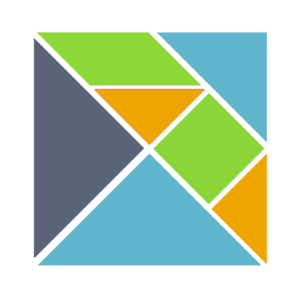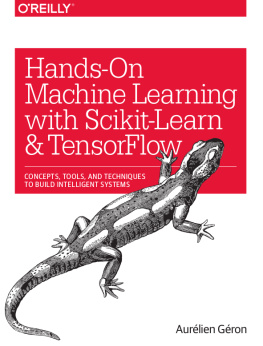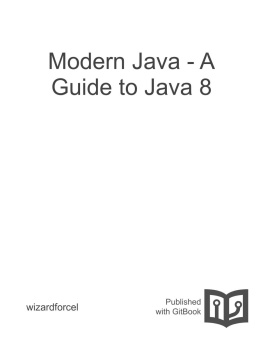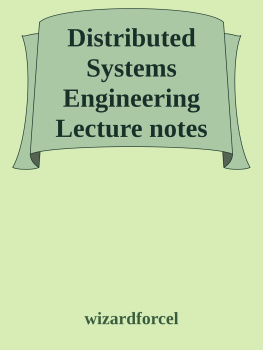it-ebooks - Functional Programming Lecture Notes (Chicago CS223)
Here you can read online it-ebooks - Functional Programming Lecture Notes (Chicago CS223) full text of the book (entire story) in english for free. Download pdf and epub, get meaning, cover and reviews about this ebook. year: 2017, publisher: iBooker it-ebooks, genre: Computer. Description of the work, (preface) as well as reviews are available. Best literature library LitArk.com created for fans of good reading and offers a wide selection of genres:
Romance novel
Science fiction
Adventure
Detective
Science
History
Home and family
Prose
Art
Politics
Computer
Non-fiction
Religion
Business
Children
Humor
Choose a favorite category and find really read worthwhile books. Enjoy immersion in the world of imagination, feel the emotions of the characters or learn something new for yourself, make an fascinating discovery.

Functional Programming Lecture Notes (Chicago CS223): summary, description and annotation
We offer to read an annotation, description, summary or preface (depends on what the author of the book "Functional Programming Lecture Notes (Chicago CS223)" wrote himself). If you haven't found the necessary information about the book — write in the comments, we will try to find it.
Functional Programming Lecture Notes (Chicago CS223) — read online for free the complete book (whole text) full work
Below is the text of the book, divided by pages. System saving the place of the last page read, allows you to conveniently read the book "Functional Programming Lecture Notes (Chicago CS223)" online for free, without having to search again every time where you left off. Put a bookmark, and you can go to the page where you finished reading at any time.
Font size:
Interval:
Bookmark:
From: Lecture Notes
There will be two primary themes:
Implementing and analyzing efficient data structures,particularly in the context of functional programming languages.
Functional reactive programming (FRP) for interactive programs.
Why? Well, because all of you have seen at least one functionalprogramming language before (Racket in 151 or Haskell in 161, and perhapsStandard ML in 221 or 226x), there's an implicit "Advanced" or "Topics in"that prefixes the "Functional Programming" name of this course.So, we need to choose some topics to study.
There's certainly plenty of interesting and important topics relatedto data structures, some of which you may have seen in other courses.But probably few of you have seen all of the data structures andanalysis techniques we will cover, and fewer still will have spent muchtime with them in the context of a purely functional language.That's one good topic.
Functional reactivity is a neat idea for building interactive programs.It's not really mainstream yet, so probably few of you have spent muchtime with it before. That's makes for another good topic.
And as it happens, I have wanted an excuse to learn more about both of these,so why not make a course out of it? (I am curious, and so can you!)

The vehicle we will use for programming is Elm, an exciting,new-kid-on-the-block language that features FRP at its core and thatcompiles to JavaScript for browser integration.
The core of Elm, on top of which FRP primitives are built,is a small dialect of ML.
No, not that ML. In our world, ML refers to a family offunctional programming languages, developed since the 1970s,which has served as seminal work for decades of programminglanguage design and engineering work.
I like to think of ML as kind of sitting halfway between Racketand Haskell for several reasons.
Evaluation Strategy.
Like Racket and pretty much every language you may know besides Haskell,Elm is eager expressions will be evaluated even when theirresulting values are not immediately, or ever, needed elsewhere inthe program.
Interestingly, however, we will see that lazy evaluationis actually crucial to building efficient data structures in purelyfunctional languages (i.e. without mutable variables).
To bridge this gap, Elm (and most other ML dialects) do providemechanisms for lazy evaluation on top of the eager semantics.
Types.
Unlike Racket but like Haskell, ML has a static type system that rejectsprograms that might possibly (but not necessarily) fail with certainkinds of run-time errors.
ML type systems feature a bunch of really neat and powerful features such as parametric polymorphism and automatic type inference but generally do not employ mechanisms like Haskell's type classes.
Note: there is a statically typed dialect of Racket calledTyped Racket. In fact, designing typed dialects of"dynamic" languages like Racket, JavaScript, Python, etc. is anactive area of programming languages research.
Side Effects.
Even when functional programming languages do offer imperative(or impure) features such as mutable variables, their use isdiscouraged and typically used in small, local ways.
Although both ML and Haskell languages do have features thatproduce side effects, their type systems track such features in verydifferent ways. Such effects typically "go outside" an ML type system,whereas in Haskell effects are recorded in types. Functions of type
Int -> Stringin ML may possibly perform I/O with the user, butin Haskell they cannot. Instead, such functions would have typeIO (Int -> String)in Haskell.Although Elm does not offer mutable variables, we will see othermechanisms that it provides which break out of the purely functionalparadigm.
Practical languages that build on an ML core typically have manyadditional features such as objects, modules, threads, exceptions, laziness, andmany forms of syntactic sugar that help with real-world programming.Popular full-fledged ML dialects include Standard ML,OCaml, and F#.Elm, in comparison, is a much smaller ML language with feweradditional features beyond those for FRP.
This course will feature usual things like homeworks, exams, grades,TAs, etc. See the Course Info page for details.
If you like programming and math (in other words, if you likecomputer science), I think you will like this course.
If you like only courses that are super-polished, however, thenperhaps this course is not for you. This is the first time I'mteaching these topics, some of which, like I said, I will be grokkingfor the first time. In addition, although the Elm language, libraries,and tools are really coming along nicely, it is still a smalllanguage with a small (but helpful!) community. As a resultof these factors, there may be times during the course when youwill have to get your hands a bit dirty. That said, I think we'llhave some fun.
We will be using Elm v0.14.If there are minor language revisions released throughout the quarter,we will decide whether or not to upgrade.You should get Elm up and running as soon as possibleto make sure that you have a working development environment.
Let's jump in with some examples at the REPL (read-eval-print loop).
% elm-replElm REPL 0.4 Type :help for help, :exit to exit>> TrueTrue : Bool> FalseFalse : Bool> 'a'"'a' : Char> "abc""abc" : String> 3.03 : FloatNumeric literals without a decimal point are described bythe type variable number, which describes both Intsand Floats.
> 33 : numberOne way to read the last line above is "for every type numbersuch that number = Int or number = Float, 3 has type number."In other words, "3 has type Int and Float" and depending on how theexpression is used, the Elm type checker will choose to instantiatethe type variable number with one of these types.
> truncate 33 : Int> truncate 3.03 : IntIf you are familiar with Haskell, think of number as a typeclass that is "baked in" to the language. Elm does not have generalsupport for type classes, but it does have a few special purposetype classes like number.
Tuples package two or more expressions into a single expression.The type of a tuple records the number of components and each oftheir types.
> (True, False)(True,False) : ( Bool, Bool )> (1, 2, 3.0)(1,2,3) : ( number, number, Float )Lone expressions prefer to remain alone:
> ("Leave me alone!")"Leave me alone!" : String> (((((("Leave me alone!"))))))"Leave me alone!" : StringLike in most functional languages, all functions take exactlyone argument and return exactly one value.
> exclaim = \s -> s ++ "!" : String -> String> exclaim s = s ++ "!" : String -> String> exclaim "Hi""Hi!" : StringFont size:
Interval:
Bookmark:
Similar books «Functional Programming Lecture Notes (Chicago CS223)»
Look at similar books to Functional Programming Lecture Notes (Chicago CS223). We have selected literature similar in name and meaning in the hope of providing readers with more options to find new, interesting, not yet read works.
Discussion, reviews of the book Functional Programming Lecture Notes (Chicago CS223) and just readers' own opinions. Leave your comments, write what you think about the work, its meaning or the main characters. Specify what exactly you liked and what you didn't like, and why you think so.







